Burro Mesa Chert and Kaolinite
Technically a silicified tuff, Burro Mesa chert is a stone of excellent quality that varies tremendously in color and texture. Every shade of the spectrum is represented in the stone as solid colors or mottled or banded patterns. Deposits of the chert are underlain by tuff beds within which are veins of kaolinite, a relatively soft, white claystone that was used by prehistoric peoples to make ornaments such as beads and pendants. These materials come from the famed Burro Mesa quarry (41BS220) in Big Bend National Park (BBNP). The prehistoric quarry is listed on the National Register of Historic Places as part of the Burro Mesa Archeological District. Burro Mesa quarry is one of the most important archeological resources of BBNP, because of its sheer size (over 40 acres) and the fact that it was intermittently, and at times intensively, mined for 13,000 years.
Burro Mesa quarry is located in the foothills of the Chisos Mountains. Parts of the quarry were mined by native peoples particularly heavily. In several areas small overhangs seem to have been enhanced or created by digging to remove unweathered material of exceptional quality.
After the chert was removed, it appears as though fire was used to break it into manageable pieces, which were broken by knapping into initial reduction stages. In other words, suitable pieces were shaped and thinned into bifacial “preforms” and “quarry blanks,” while large flakes were detached from other pieces. The preforms, blanks, and large flakes that had good potential to be made into finished tools were then hauled away to campsites and other places for later fine work. This process was repeated countless times, leaving the entire Burro Mesa quarry area covered by a carpet of lithic debris—cores, flakes, chunks, and failed early-stage bifaces.
Pieces of kaolinite periodically break loose from the quarry and tumble down the side of the canyon into the dry streambed below, where they are carried downstream when water flows through the canyon. It appears that native peoples procured kaolinite from this and other nearby streambeds, rather than mining it directly at Burro Mesa quarry. Kaolinite ornaments have been found in association with Middle Archaic through Late Prehistoric age projectile points in the Big Bend region.
Chipped-stone tools and debitage of Burro Mesa chert and kaolinite ornaments have been found at least as far as 50 miles to the west and north of the Chisos Mountains. A Clovis point and a Plainview point made of Burro Mesa chert indicate that the quarry was already being mined in the early Paleoindian period, some 12,000-13,000 years ago. The quarry appears to have been used intermittently since then, and likely served as a focal point for hunter-gatherers in the Big Bend area throughout the prehistoric and early historic periods.
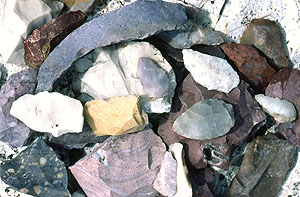
|
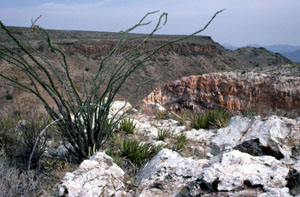
|
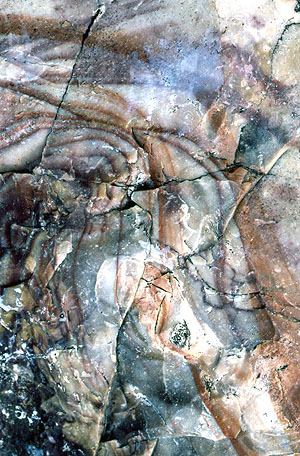
|
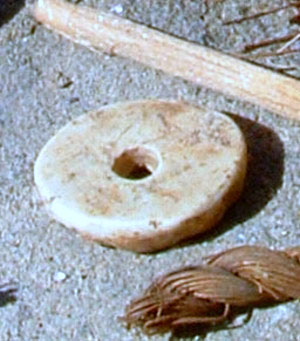 Kaolinite pendant from a small cave at the northern edge of Study Butte in southwestern Brewster County, on the western edge of Big Bend National Park. Kaolinite is a relatively soft, white claystone that was used by prehistoric peoples to make ornaments such as beads and pendants. Photo by Andy Cloud, courtesy CBBS. |
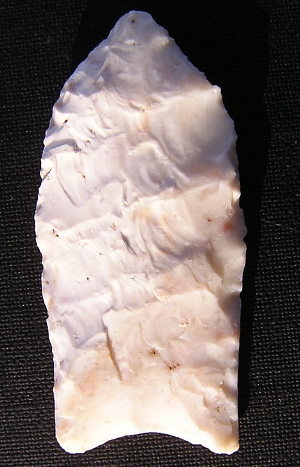
|